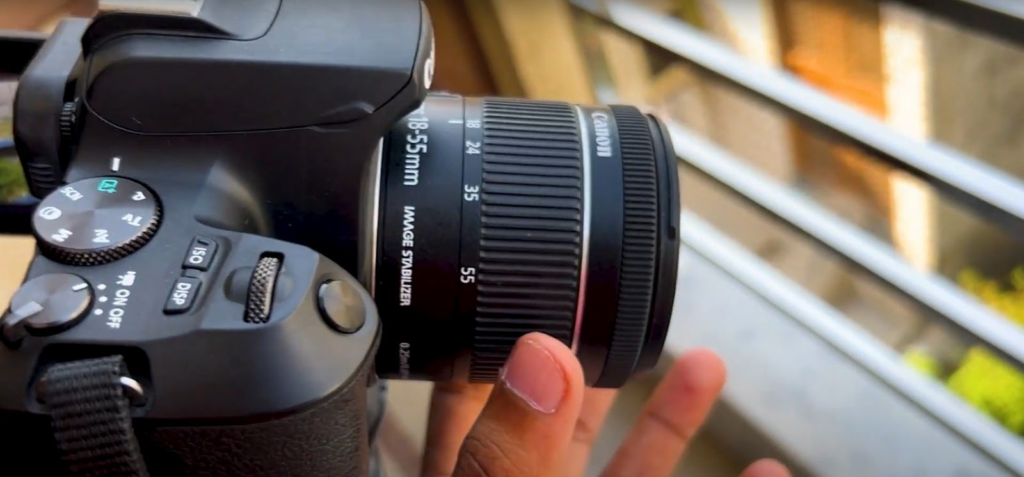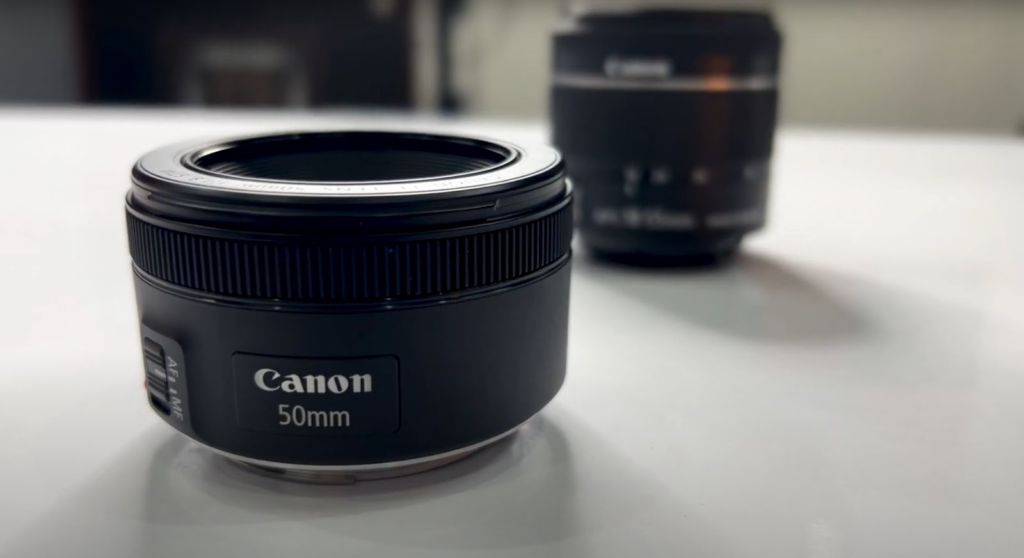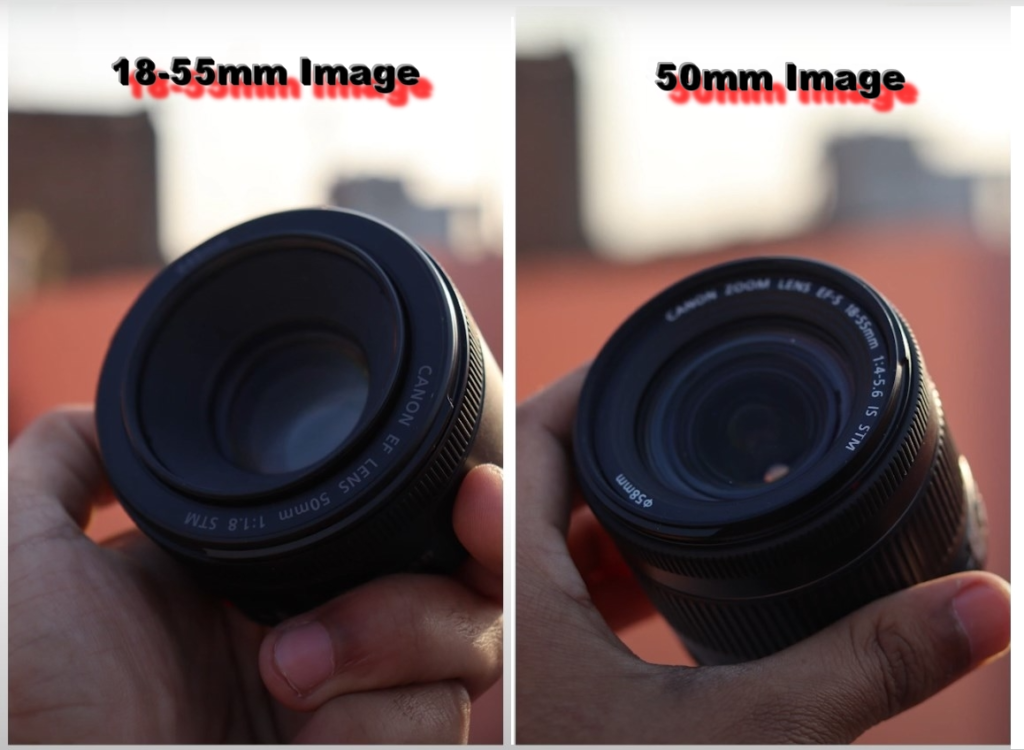As photographers, we constantly seek the ideal lens that enables us to capture stunning images with precision and clarity. When it comes to lens choices, the 50mm prime lens and the versatile 18-55mm zoom lens are two popular options that often perplex photographers.
In this comprehensive article, we will delve into the benefits of each lens, outlining their pros and cons, and providing valuable insights to help you make an informed decision. By the end, you’ll have a clearer understanding of which lens suits your photography style and specific requirements.
Overview of 50mm Lens
The 50mm lens, also known as the “nifty fifty,” is a fixed focal length lens that provides a natural perspective similar to what the human eye sees. It is highly regarded for its wide aperture capabilities, resulting in excellent low-light performance and shallow depth of field.
The 50mm lens is available for both full-frame and crop sensor cameras, with the latter offering an effective focal length due to the crop factor.
Pros of a 50mm Lens
- Wide Aperture: One of the primary advantages of a 50mm lens is its wide aperture, typically ranging from f/1.2 to f/1.8. This wide maximum aperture allows for exceptional performance in low-light conditions, enabling you to capture sharp and detailed images without resorting to high ISO settings or slow shutter speeds;
- Shallow Depth of Field: The wide aperture of a 50mm lens also contributes to a shallow depth of field, resulting in a pleasing bokeh effect. This aesthetic quality allows you to separate your subject from the background, creating a visually appealing and professional look;
- Compact and Lightweight: 50mm lenses are generally compact and lightweight, making them highly portable and convenient for various photography genres. Their small form factor allows for unobtrusive shooting, which is particularly beneficial in street, documentary, and candid photography;
- Versatility: While 50mm lenses are often associated with portrait photography, they are versatile enough to handle other genres as well. From street photography and landscapes to product shots and event coverage, a 50mm lens can adapt to a wide range of scenarios, offering a standard field of view that closely resembles our natural vision.
Cons of a 50mm Lens
- Fixed Focal Length: The main drawback of a 50mm lens is its fixed focal length, which means you cannot zoom in or out to adjust your framing. This limitation may require you to physically move closer or further from your subject to achieve the desired composition.
Less Suitable for Certain Genres: While the 50mm lens is versatile, it may not be the best choice for certain photography genres such as wildlife or sports, where the ability to zoom in and capture distant subjects is crucial.
Overview of 18-55mm Lens
The 18-55mm lens, often bundled as a kit lens with entry-level DSLRs and mirrorless cameras, offers a versatile focal length range suitable for a variety of shooting situations. It provides the flexibility of zooming in and out, allowing you to frame your shots without physically moving closer or further from your subject.

Pros of an 18-55mm Lens
- Versatility: The key advantage of an 18-55mm lens lies in its versatility. The zoom range provides a wide-angle perspective at 18mm, ideal for landscapes and architecture, while the 55mm focal length allows for moderate telephoto shots, suitable for portraits and detail-oriented photography;
- Ideal for Beginners: The 18-55mm lens is often included as a kit lens with entry-level camera bodies, making it an excellent choice for beginners. It offers a well-rounded focal length range, allowing users to explore different genres of photography without investing in additional lenses;
- Optical Image Stabilization (OIS): Many 18-55mm lenses feature optical image stabilization, which compensates for camera shake, particularly when shooting handheld or in low-light conditions. This feature helps to ensure sharper images and reduces the reliance on using higher ISO settings or slower shutter speeds;
- Cost-effective Option: Compared to prime lenses, the 18-55mm lens is generally more affordable. It offers a budget-friendly solution for photographers who are just starting or have budget constraints.
Cons of an 18-55mm Lens
- Narrower Aperture Range: One limitation of the 18-55mm lens is its narrower maximum aperture range compared to prime lenses. While it typically ranges from f/3.5 to f/5.6, this may limit low-light performance and the ability to achieve a shallow depth of field;
- Image Quality: While modern kit lenses have improved significantly, they may not deliver the same level of optical performance and image quality as prime lenses.
Some compromises may be evident in terms of sharpness, distortion, and vignetting, especially at the extreme ends of the focal length range.
Comparison of 50mm and 18-55mm Lens Specifications
| Specifications | 50mm Lens | 18-55mm Lens |
|---|---|---|
| Focal Length Range | 50mm | 18-55mm |
| Maximum Aperture | f/1.2 – f/1.8 | f/3.5 – f/5.6 |
| Image Stabilization | Depends on model | Available in some models |
| Lens Construction | Prime lens | Zoom lens |
| Weight | Varies | Varies |
Exploring the Capabilities of an 18-55mm Lens
The 18-55mm lens, commonly known as a kit lens, offers a versatile range of focal lengths that make it suitable for various photography genres.
Let’s take a closer look at what you can achieve with this lens.
- Landscapes: At the wider end of the zoom range, around 18mm, the lens excels in capturing breathtaking landscapes. Its wide-angle perspective allows you to encompass vast scenes, from expansive vistas to dramatic cityscapes. You can capture the grandeur of nature or the architectural details of buildings with this lens;
- Travel & Lifestyle: When you’re on the go, the 18-55mm lens proves to be a valuable companion. Its focal length range covers a wide field of view, enabling you to document your adventures, capture the essence of different cultures, and tell visual stories of your travels. From bustling city streets to serene countryside, this lens captures the essence of your journey;
- Architecture: Architecture photography often requires capturing the grandeur and intricate details of buildings. The 18-55mm lens, with its ability to zoom in and out, allows you to compose shots that showcase architectural marvels, emphasizing lines, shapes, and symmetry. Whether capturing historic landmarks or modern structures, this lens provides flexibility in capturing the desired perspective;
- Still Life: When it comes to still life photography, the 18-55mm lens offers a versatile range for capturing various subjects. From small tabletop setups to larger compositions, this lens allows you to frame objects and create visually appealing arrangements. It’s an excellent choice for product photography, food photography, and other still-life subjects.
Exploring the Capabilities of a 50mm Lens
The 50mm lens, often considered the standard or normal lens, offers a perspective that closely resembles the human field of view.

Let’s check the capabilities and why this lens is well-regarded in certain photography genres.
- Street Photography: The 50mm lens excels in street photography due to its normal field of view, which closely mimics our natural vision. You can walk around, observe the surroundings, and easily frame compositions without the need for extensive zooming. Its compact size also makes it less conspicuous, allowing for candid shots and capturing authentic moments on the streets;
- Portraits: Portraiture is another domain where the 50mm lens shines. Its focal length provides a flattering perspective for capturing headshots and portraits with a natural look. The 50mm lens minimizes distortion, resulting in pleasing facial proportions and a shallow depth of field when shooting at wider apertures. Whether photographing individuals or groups, this lens can produce stunning portraits with sharpness and clarity;
- Pet Photography: When photographing pets, the 50mm lens can capture their personality and essence. Its focal length allows you to focus on your furry subjects while maintaining a comfortable distance. The lens’s wide aperture capabilities also enable you to isolate the pet from the background, creating a visually appealing bokeh effect.
Is 50mm the Best Focal Length?
The question of whether 50mm is the best focal length depends on the specific photography genre and personal preferences. However, in terms of a general-purpose lens, the 50mm lens is often considered one of the best due to its versatility and compact size.
The 50mm focal length closely resembles what our eyes see, making it an ideal choice for various situations. Its field of view and minimal distortion contribute to natural-looking images, making it a favorite among photographers. Additionally, the popularity of the 50mm focal length means that a wide range of options and aperture sizes are available from different brands.
Best 50mm Lenses by Brand
Here are some notable 50mm lenses from different manufacturers known for their performance and optical quality:
| Brand | Lens Model | Maximum Aperture |
|---|---|---|
| Canon | Canon EF 50mm f/1.8 STM | f/1.8 |
| Nikon | Nikon AF-S 50mm f/1.8G | f/1.8 |
| Sony | Sony FE 50mm f/1.8 | f/1.8 |
| Fujifilm | Fujifilm XF 35mm f/1.4 | f/1.4 |
| Olympus | Olympus M.Zuiko 25mm f/1.8 | f/1.8 |
Canon EF 50mm f/1.8 STM
The Canon EF 50mm f/1.8 STM is a popular choice among Canon photographers. It features a wide maximum aperture of f/1.8, allowing for excellent low-light performance and creating a beautiful shallow depth of field. The STM (Stepping Motor) technology ensures smooth and quiet autofocus, making it suitable for both still photography and video recording. This lens is compact, lightweight, and affordable, making it a great option for photographers on a budget.
Nikon AF-S 50mm f/1.8G
The Nikon AF-S 50mm f/1.8G is a versatile lens that delivers stunning image quality and exceptional performance. With a maximum aperture of f/1.8, it excels in low-light situations and allows for precise subject isolation. The Silent Wave Motor (SWM) ensures fast and accurate autofocus, while the aspherical lens element minimizes distortion and aberrations. This lens is a popular choice among Nikon users for its sharpness, portability, and affordable price.
Sony FE 50mm f/1.8
Designed for Sony’s full-frame mirrorless cameras, the Sony FE 50mm f/1.8 is a compact and lightweight lens that offers outstanding image quality. It features a wide maximum aperture of f/1.8, enabling excellent low-light performance and beautiful bokeh. The lens incorporates a double-gauss design, resulting in sharpness and clarity throughout the image. With its fast and accurate autofocus, it is well-suited for both still photography and video recording.
Fujifilm XF 35mm f/1.4
Although technically a 35mm lens, the Fujifilm XF 35mm f/1.4 is often mentioned in discussions about 50mm lenses due to its similar field of view on Fujifilm’s APS-C cameras. It offers a wide maximum aperture of f/1.4, allowing for impressive low-light capabilities and shallow depth of field. This lens delivers exceptional image quality, sharpness, and beautiful bokeh. It features a robust build quality and precise manual focus control, making it a favorite among Fujifilm users.
Olympus M.Zuiko 25mm f/1.8
The Olympus M.Zuiko 25mm f/1.8 is designed for Micro Four Thirds cameras, offering a 50mm equivalent focal length. With its fast maximum aperture of f/1.8, this lens provides excellent low-light performance and depth of field control. It delivers sharpness, clarity, and vibrant colors, making it suitable for various photography genres. The autofocus is quick and accurate, ensuring sharp results, and its compact size + lightweight design make it a convenient choice for travel and everyday photography.
These lenses from reputable brands offer photographers excellent image quality, reliable autofocus performance, and the versatility to capture stunning photographs in various situations. Consider your specific camera system and requirements when selecting the best 50mm lens for your needs.

How Far Can I Shoot with a 50mm Lens?
Similar to the 18-55mm lens, the reach of a 50mm lens is limited compared to longer focal length lenses. The minimum focus distance of most 50mm lenses is around 1.5ft / 0.45m, requiring you to be at a certain distance from your subject.
The distance you can shoot with a 50mm lens depends on the type of shot you want to capture. For full-body portraits, the ideal distance is approximately 19.6 – 33 ft (6m – 10m). However, if you are focusing on headshots or tighter compositions, you won’t need to be that far away from your subject. Remember that the 50mm lens is versatile and can adapt to different shooting distances based on your creative vision.
Conclusion
When it comes to choosing between a 50mm lens and an 18-55mm lens, it ultimately depends on your photography style, preferences, and shooting requirements. The 50mm lens offers the advantages of a wide aperture, shallow depth of field, and compactness, making it ideal for low-light conditions, portraits, and street photography. On the other hand, the 18-55mm lens provides versatility, convenience, and cost-effectiveness, making it suitable for beginners, travel photography, and general-purpose use.
Consider your specific needs, the genres you enjoy shooting, and your budget constraints when making your decision. Remember that lens selection is a personal choice that should align with your artistic vision and shooting style. Whichever lens you choose, both the 50mm lens and the 18-55mm lens have their unique strengths, allowing you to capture memorable images and express your creativity through the power of photography.
